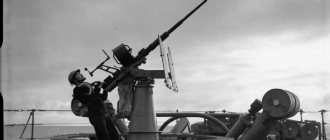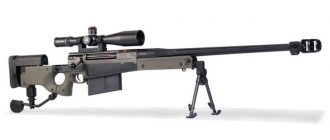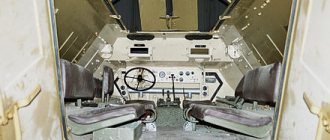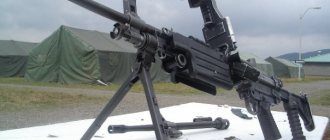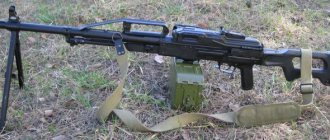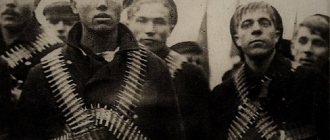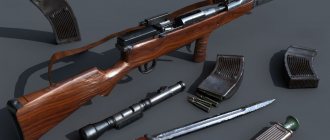The fronts of the First World War were a huge mutual siege. The development of industry made it possible to deploy millions of people, supply artillery with ammunition, and dig endless lines of trenches. The maneuver gave way to positional warfare - an ineffective meat grinder. However, the massive use of assault groups changed the face of war no less than the appearance of the tank.
Timur Sherzad
9 June 2020 13:45
The continuous line of the Western Front was established already in October 1914: the war of maneuver did not last long. The military lost its favorite way to win - outflanking the enemy. Serious maneuver became impossible; it was necessary to attack head-on, which required more forces for at least partial success and increased losses.
The superiority of defense over offense has become complete. The defenders spent years studying the battle area. They noted convenient positions for deploying enemy forces and targeted machine guns and artillery. Their barbed wire led the attackers into machine gun fire. Even the initiative of the attackers did not allow them to win. The attacking side could still choose the place and time and concentrate forces. But while the attackers were making their way through the layered defense, the enemy was transporting reinforcements by train. Then came a counterattack with fresh forces against the exhausted attackers, and they rolled back, suffering heavy losses. This happened over and over again.
Inertia
The British and French tried to break the vicious circle by developing and mass-producing tanks. The Germans took a different route, relying on small but brave and independent groups of infantrymen. The calling card of the assault group fighter was conscious courage, used on personal initiative, and not by order. True, the Kaiser’s army met the beginning of the First World War in a completely different form.
The poster for the German film about storm troopers, shot in 1934, is an excellent example of the glorification of stormtroopers of the Great War in the Third Reich.
In 1914, class barriers were still strong. The Kaiser's army was ready to break into pieces, but not allow anyone outside the traditional officer caste to take command. There were not enough well-born people who could become junior officers. The units became large and poorly managed. For example, an infantry platoon under the command of a lieutenant consisted of 80 people.
The Prussian military aristocracy was brought up in the traditions of the 18th century - no trust in the soldier. As soon as you look away, German officers believed, the soldier would immediately drink, steal, or even desert. The non-commissioned officers assisting the lieutenants were at a higher level, but this was not enough for the “classical” Prussian officer of the early war to allow them to lead any part of the battle. The reluctance to lose direct control over the soldiers or to delegate this authority to non-commissioned officers pushed junior commanders to close formation tactics.
This fit well with the experience of the victorious Franco-Prussian War of 1870-1871, when furious bayonet attacks brought success. In 1914, they no longer worked: the development of small arms put an end to any attempts to attack in close ranks. A textbook example was the attack of the 2nd Guards Infantry Division near the city of Ypres on November 11, 1914. The well-trained guard walked in tight formation, showing demonstrative contempt for death. She was met by British repeating rifles, machine guns and artillery. The guardsmen fell in whole groups. Due to their total numerical superiority, the Germans managed to take the first line of trenches. But the losses were so great that the British easily recaptured what they had captured with the next counterattack.
The MP18 was one of the first mass-produced submachine guns. Until the end of the war, at least 10 thousand units entered the troops. The weapon performed well during storming trenches.
German machine guns of the Maxim system during the First World War
In 1892, the Berlin company, under license from Maxim-Nordenfeld, began production of Maxim machine guns.
In 1894, these tripod-mounted machine guns were purchased by the German Navy. On the base in 1896 (DWM) was formed. In 1899, the German Reichswehr purchased machine guns from this company for testing. German Maxims were also purchased by Austria-Hungary, Russia and Spain. In 1901, the Maxim, designated MG.01, was adopted by the Kaiser's army. The machine guns were equipped with Shlitten 01 or 03 sled machines. During the battle, the crew either dragged the machine gun or carried it on a machine. The production of machine guns for the navy continued, which differed from the army ones in the way they were mounted on the installation. In 1908, the modification MG.08 (Maschinen Gewehr 1908) was adopted, which used a 7.92-mm Mauser rifle cartridge. Replacing some parts made of cast steel and bronze with parts made of alloy steel made it possible to reduce the weight of the machine gun by 30% (from 26 kilograms MG.01 to 18.35 kilograms MG.08). Production of the MG.08 was established at DWM, and already in 1911 at the state arsenal in Spandau, which became the main manufacturer of these machine guns.
The MG.08 machine gun had several differences from the Maxim machine gun of the 1910 model: in the muzzle, the gas push was perceived not by the thickening of the barrel, but by a bushing placed on the barrel, while the muzzle itself turned into a conical flame arrester, usually having a protective disk; the front point of attachment to the machine was two casing trunnions; the return spring box had a tension indicator (scale from 0 to 70); the backplate of the box was hinged. The lock was distinguished by: integral locking levers; the pins on the frame of the lock were the axes of the lifting levers; the upper and lower slopes differed in shape, and the lower slope and ankle had tubular axles; the mainspring was attached to a tubular axis; the lock levers had a threaded tail instead of a tube; there was no possibility of adjusting the gap between the barrel stump and the combat cylinder; the combat cylinder is made without a protruding rim for the cartridge. In general, the design changes made simplified the assembly and debugging of the machine gun. The weight of the barrel was 1.885 kilograms, the recoil length of the bolt was 97.0 millimeters, the barrel was 15.0 millimeters. The folding rack sight had notches from 400 to 2000 meters, the length of the aiming line was 895 millimeters. The barrel casing had a volume of 4 liters. The machine gun consisted of 258 parts.
The Schlitten 08 sled consisted of a massive sled base with rear supports, front legs, a lifting mechanism with a fine and coarse aiming switch. The machine gun was fixed in the swivel coupling. The height of the line of fire was determined by the angle of rotation of the legs. Fire could be fired from sitting or lying positions. To fix the aiming, clamps for horizontal and vertical aiming were used. The four-support design often did not allow the machine to be leveled, which, in combination with the design of the swivel, could lead to the machine gun falling over. The massiveness of the machine ensured good accuracy, but made movement difficult.
An optical sight with a magnification of 2.2-2.5x or a panoramic sight with a magnification of 2.5x, which was mounted on the left wall of the box, was used with the machine gun. In order to fire indirectly using a panoramic sight, the machine was slightly changed.
The DWM company supplied machine guns of the Maxim system to Brazil, Belgium, Persia, China, Peru, Serbia, Romania, Turkey, Switzerland, and Chile. As a result, before the outbreak of the First World War, German-made Maxims were in service with the warring armies on both sides.
On many machine guns in 1915, the muzzle was strengthened, speeding up the moving system - this was not so much to increase the rate of fire, but to improve the operation of the power supply system and automation in dirty and dusty conditions. The crews refused to use armored shields, but began to protect the front part of the casing with armored caps, since penetration of the casing would render the machine gun inoperable.
LMG.08 - aviation machine guns - were distinguished by air cooling and a perforated casing, which reduced the weight to 15.5 kilograms, as well as a modified butt plate. On airplanes, machine guns were usually mounted motionless.
In 1915, Colonel Friedrich von Merkatz, a member of the Weapons Test Commission in Berlin-Spandau, became the head of a small design team whose goal was to develop a “lightweight” version of the MG.08, which developed fire of the same intensity, but was controlled and carried by one person. Soon the MG.08/15 light machine gun was adopted for service. The manual modification of the machine gun had a smaller casing diameter (89 mm instead of 109), and its capacity was 2.8 litres (instead of 4). Barrel weight – 1.8 kg. The muzzle and the shape of the box were changed, the thickness of the walls of the box was 3, not 4 mm, and the under-barrel tube was eliminated. The wooden butt was attached to the butt plate, and at the bottom of the box there was a pistol grip and trigger. A safety lever was installed above the pistol grip, which locked the trigger. The machine gun received a triangular cross-section front sight and a sector sight. The length of the aiming line was 800 mm. The machine gun consisted of 197 parts. Attached to the box on the right was a round box with a belt containing 100 rounds of ammunition placed in it (the box was immediately nicknamed “drum” by the troops). The tape was wound inside the drum onto a reel, the weight of the empty drum was 1.85 kg. Along with the drum, a standard belt was used in a 250-round box. In this case, the box was transported separately. A massive triangular bipod was attached to the back of the casing, around which the machine gun rotated in a horizontal plane. The machine gun was equipped with a rifle belt.
The Reichswehr ordered MG.08/15 machine guns in the ratio of 5 light machine guns to 2 heavy machine guns, production was carried out by the arsenal in Erfurt, Rheinmetall, Maschinenfabrik Augsburg-Nuremberg. Towards the end of the war, German soldiers, like the French, tried to use luminescent luminescent marks on their sights.
With the start of production of MG.08/15, its “aviation” modification appeared, designated LMG.08/15, and having air cooling, a stock (for a mobile installation) and without a stock (for a stationary one). This modification turned out to be more successful than the LMG.08 and soon replaced it in production in Spandau. This aircraft machine gun was equipped with a mechanical shot counter.
The “universal” MG.16 machine gun, developed on the basis of the MG.08 under the leadership of Merkatz, could fire not only at ground but also at air targets from a tripod machine, as well as from a bipod. However, this machine gun did not enter service, since it was difficult to switch to the production of a modification that had a lot of new features. We limited ourselves to assembling a pilot batch in Erfurt. However, the lightweight Dreifuss 16 tripod machine with telescopic legs was adopted for the MG.08 machine gun. The total mass of MG.08 and tripod was 58.4 kilograms. The same machine was used with captured Russian and Belgian machine guns. Anti-aircraft machine gun mounts were not officially adopted, but found limited use.
The air-cooled MG.08/18 machine gun was initially used as an aviation machine gun, but here it had a more successful competitor - the Parabellum. Towards the end of the war, the MG.08/18 machine gun was adopted for cavalry, scooters and mountain infantry. Its production was carried out in the arsenal in Erfurt. The barrel of the MG.08/18 machine gun was enclosed in a perforated casing with a diameter of 37 mm. A carrying handle was attached to the casing. Instead of a muzzle, there was a barrel guide bushing that was screwed into the casing, the front sight was placed on a high stand, and a bipod was attached to the casing using a coupling. With the introduction of the MG.08/18 machine gun to the infantry, it became clear that firing could only be carried out in short bursts due to the irreplaceability of the barrel. The design solutions used in the MG.08/18 were later used in the Soviet MT light machine gun.
In total, during the First World War, about 260 thousand machine guns of the MG.08, 08/15 and 08/18 models were produced in Germany, of which only 72 thousand were mounted.
To unload the MG.08 heavy machine gun it was necessary to: Pull the handle forward twice and release it. Press the release lever. Remove the tape from the receiver by pressing the bottom finger of the receiver. Push the sleeve or cartridge out of the outlet tube using a suitable rod.
Assembly, unloading and disassembly of the MG.08/15 and MG.08/18 light machine guns is generally the same as for the Maxim heavy machine gun.
Based on materials: S. Fedoseev - Machine guns in the First World War
How to run towards machine guns correctly
But some officers took into account the pre-war experience of other armies and abandoned dense bayonet attacks even before the start of hostilities. The decentralization of the Kaiser's army helped with this. Regimental commanders had almost complete freedom to train soldiers and introduced scattered formations in several places at once, independently of each other.
The advantages of a loose formation were illustrated by the attack of the 43rd Infantry Brigade, which occurred in East Prussia on September 8, 1914. 15 of the 16 companies of the first line were dispersed - not as a single mass, but in groups of 30-40 people. The groups themselves also moved as loosely as possible to make it difficult for enemy shooters to aim. Of the 2,250 fighters of these 15 companies, the vast majority survived the attack - only 25 people died. But there was one more, the sixteenth company. She was commanded by a reserve officer, a man of the old school. Having disobeyed the brigade commander, he led the company in the traditional tight formation and paid dearly for it, losing more than 150 soldiers.
But this happened on the Eastern Front, which had not yet had time to completely ossify into strong defensive lines. For the conditions of the West, with its deeply echeloned defense, a loose formation was not enough. Something more was required - a new tactic that would radically change not only the actions, but also the soldier’s sense of self on the battlefield. Its development was best achieved by Hauptmann (Captain) Wilhelm Rohr, who in August 1915 took over as commander of the first assault battalion in the Kaiser's army. He proposed dividing huge platoons into small squads of 3-10 people. The captain departed from the seemingly unshakable rule of war, deciding that at least at the stage of crossing no-man's land, units should move independently, without trying to maintain interaction with each other at any cost. This made it possible to use folds in the terrain, reducing losses.
Description
W85 in anti-aircraft version of QJC-88.
Heavy machine guns are identified by the large caliber of the cartridge (usually .50 BMG or 12.7x108 mm). This ensures the destruction of ground targets with an armor thickness of 15-20 mm at ranges of up to 800 meters.
Heavy machine guns are the main anti-aircraft weapon of tanks and the main weapon of some armored personnel carriers.
Their versatility ensured their widespread introduction into all branches of the armed forces, individual branches of the military and special forces: as a means of air defense (air defense) (ZPU-4), infantry heavy machine guns, installed on turrets in army all-terrain vehicles, on tanks as anti-aircraft guns (NSVT), for armored personnel carriers as the main ones (KPVT), for ships and boats, for light landing helicopters (GAU-19), and until recently for attack helicopters (YakB-12.7).
All large-caliber machine guns are characterized by a significant mass - 20-60 kg (without the machine), compared to single machine guns. On a universal machine the weight can reach 160 kg.
By type of ammunition
The Second World War
- 12.7x81mm SR Breda: Breda-SAFAT, Type 1;
- 12.7x81mm: Vickers .50;
- 12.7x99 mm: Browning M1921, Browning M2;
- 12.7×108 mm: DShK, ;
- 12.7×108 mm R: ShVAK;
- 12.7x120mm SR: Vickers .5 Class D;
- 13x64 mm B: MG 131, Type 2;
- 13.2x96mm: Hotchkiss M1929, Breda Mod. 31, Type 3;
- 15x96 mm: MG 151;
- 15×104 mm: 15mm BESA, ZB-60;
Post-war period
- 12.7x99 mm: Browning M2, WKM-B, CIS 50MG; PVBS
: GAU-19, WLKM; - 12.7×108 mm: DShKM (Type 54), NSV (Zastava M02), Kord, A-12.7, Type 77, Type 85, QJZ-89, W85 (QJC-88); PVBS
: YakB-12.7, CS/LM5, Moharram[2]; - 14.5x114 mm: KPV (Type 58), QJG-02.
- 15.5×106 mm: FN BRG
